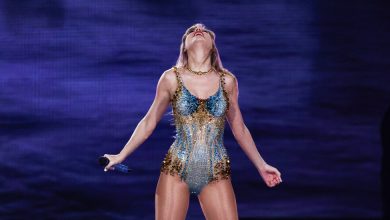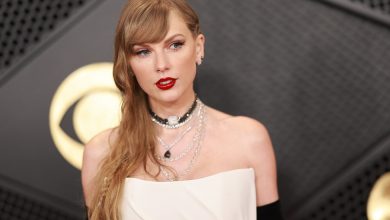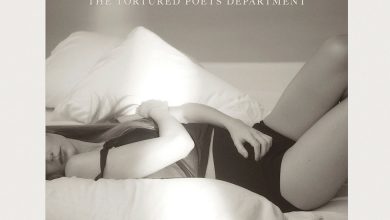She Was an Organist for the Ages

Few musicians have faced a debut more intense than did the organist Jeanne Demessieux. For years before her first concert — one of six she gave at the Salle Pleyel in Paris early in 1946 — her teacher Marcel Dupré had stoked rumors of her outlandish talent.
“Jeanne Demessieux is the greatest organist of all generations,” Dupré, then practically the god of the French organ world, had declared in 1944. She would be, he predicted, “one of the greatest glories of France.”
There was tremendous pressure, then, on this shy, workaholic, perfectionist prodigy, who had lived under what Dupré said was his “artistic protection” since 1936 — winning first prize in his class at the Paris Conservatory in 1941 and remaining his student and assistant after that.
Pressure, too, from the imposing program of the first of her “six historic recitals,” as the publicity announced them: the Bach C Minor Passacaglia; a Franck chorale; a Dupré prelude and fugue; the premiere of her own, impossibly challenging Six Études; and a symphony in four movements — one she improvised.
Yet Demessieux, who was born in Montpellier, France, in 1921 and whose centenary is being celebrated with performances of her complete organ works at St. Thomas Church in Manhattan Nov. 6, 13 and 20, exceeded expectations. Dupré waxed “of a phenomenon equal to the youth of Bach or Mozart.” Maurice Duruflé, then finishing his Requiem, declared that “next to Jeanne Demessieux, the rest of us play the pedals like elephants.” Le Figaro wrote that she was a fairy tale that could be believed in, for she had been “irresistible absolute perfection.”
“She certainly earned her place,” Stephen Tharp, the organist for the St. Thomas concerts, who released a recording of Demessieux’s complete organ compositions in 2008, said in an interview. “You like her interpretations, you don’t like her interpretations — but the amount of skill, focus, intelligence it took to play programs of that stature at the Salle Pleyel, in her 20s, and to compose, to improvise, in the way and at the level that she could, was really without equal.”
Demessieux became the first female organist to sign a record deal, setting down a fleet run through Bach’s Toccata and Fugue in D minor for Decca in 1947, and paving the way for women such as Marie-Claire Alain and Gillian Weir. Tours began, taking her around Europe and on to the United States, where the critic Virgil Thomson, praising her “taste, intelligence and technical skill of the highest order” in 1953, would think of “masters” like Charles-Marie Widor, Louis Vierne and Olivier Messiaen as the only possible equals of this “extraordinary musician and virtuoso.”
Demessieux seemed destined to take a top liturgical position, at Dupré’s St.-Sulpice or even at Notre-Dame. But shortly after her debut, Dupré, who appears to have been fed unfounded rumors that Demessieux had been disloyal, cut off contact with his pupil and resolved to sabotage her career.
Instead, Demessieux stayed with her family’s parish church, where she had been organist since she was 12, until she succeeded Camille Saint-Saëns and Gabriel Fauré as titulaire, or chief organist, at the church of the Madeleine in 1962. She prospered at a Cavaillé-Coll instrument with which she had a rare bond, having recorded a transcendent Franck cycle on it in 1959, the high point of an invaluable eight-disc set from Eloquence that came out earlier this year, amply documented with notes by the organist D’Arcy Trinkwon.
Although Demessieux was a star in the 1940s and ’50s, when she kept up a punishing concert schedule alongside her liturgical work and her teaching in Liège, Belgium, her status faltered after her death from cancer in 1968, at just 47. The Eloquence set gives her Decca tapes their first release on a major label in the CD era.
Part of the reason for Demessieux’s ebbing fortunes can be traced to the rise of neoclassical and period performance practices, which made her impulsive, lyrical, heartfelt style — one that brought a singular lightness of touch to a grand symphonic tradition — seem outdated, especially in the Bach and Handel with which she often opened her concerts.
Part of the reason, too, was the difficulty of her compositions, some of which were unpublished until recently and were promoted mostly by students like Pierre Labric. Although her whirling “Te Deum” from 1958, inspired by the Aeolian-Skinner organ at the Cathedral of St. John the Divine in New York, has had sustained success, works like her études, her “Triptyque” and her late Prelude and Fugue pushed the frontiers of the possible, and they remain “ferociously hard” even now, Tharp said — “things she really wrote for herself.”
While Demessieux sometimes wrote with moving simplicity, as in chorale preludes like “Rorate coeli” and “Hosanna filio David” that speak to the devotional quality of her Catholic faith, many of her pieces have an angst to them, a gnarled bleakness, though they stop far short of atonality.
“She uses a voice that I don’t think women were often allowed to use in other ways, and she puts it all into her music,” the organist Joy-Leilani Garbutt said in an interview.
Predictably, Demessieux faced sexist stereotypes throughout her career. There were critics who wrote ill of the high heels that were an intrinsic part of her pedal technique, or that she was “too young and attractive to be an organist of the first rank,” as The Boston Globe put it in 1953. Some churches still barred women from their organ lofts, not least Westminster Abbey, which had to give her special dispensation to perform in 1947. Perhaps most scurrilous was the slur that she was merely the creation of Dupré, not an artist in her own right.
But Garbutt, a scholar and a founder of the Boulanger Initiative, which advocates women composers, has found in her research that prejudices came with a twist in this case. Demessieux emerged from a tradition in which women organists could and did shine, though she might well have dazzled brightest of all.
“She wasn’t the only woman international virtuoso, she wasn’t the only woman composer for the organ, and she wasn’t the only woman professor of organ, or the only woman to hold a major church position,” Garbutt said, mentioning Joséphine Boulay, the earliest woman to win first prize in organ at the Paris Conservatory, in 1888; Renée Nazin, a student of Vierne’s who did three world tours in the 1930s; and Rolande Falcinelli, who succeeded Dupré as professor at the Conservatory in 1955.
“But I think Demessieux may have been the only woman to do all of those things in her lifetime,” Garbutt said.
This was an era when women had greater opportunities to succeed, Garbutt argues, suggesting that they found grudging acceptance when jobs needed filling after so many men had died in the world wars. The spatial configurations of French churches played a role, too, with organists seated high in the gallery, unseen during Mass. While there were Parisian priests who tolerated or even supported women, others banned them, a rule that some artists used their invisibility while performing to flout. Henriette Puig-Roget, for instance, simply submitted her name as Monsieur Roget, cross-dressed, and substituted for Charles Tournemire at Ste.-Clotilde.
Even so, the opportunities were fleeting. “The invisibility was a privilege or a tool that could be used to create their music,” Garbutt said, “but on the flip side it made their work disappear almost as soon as it had been created.” Women have since occupied major organ posts — Sophie-Véronique Cauchefer-Choplin, for instance, has shared Dupré’s old position at St.-Sulpice with Daniel Roth since 1985 — but equal representation remains a distant ideal.
In achieving that ideal, though, it may well be helpful to have historical material like the new Demessieux set. It is a revelation, from the incandescence of her Toccata from Widor’s Fifth Symphony to the jazzy angularity of Jean Berveiller’s “Mouvement”; the reverence of her Bach chorale preludes to the fury of her Liszt. The playing invites superlatives, even as it defies the complexity and artificiality of the organ to such an extent that it allows a rare focus on the music itself.
“Who is the greatest organist of the 20th century?” Tharp said. “I really think it’s fair to say she’s a contender.”



